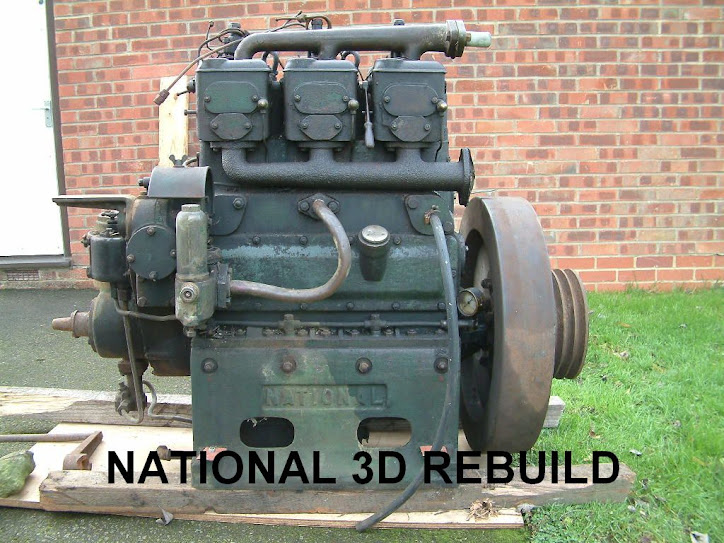A good point - well presented!
I will try to rectify:
The National Oil & Gas Engine Company (to give them their full tittle) was a renowned and well known engine manufacturer of the late 1800's and early/mid 1900's.
Back in the early 1930's, Russell Newbery where building an engine with a marine variant called the DM2 (the 2 was for two cylinders - other numbers of cylinders where available). This was a very successful engine and had been widely fitted in many boats. Due to its success, in the early 1930's, the Grand Union Canal Carrying Co awarded RN a major contract for the supply of DM2's for its new Narrowboat fleet. This left RN with a problem, as they couldn't supply enough engines in the required timeframes. This problem was solved by National. They constructed engines, under licence, to meet Russell Newbery's demand.
Of the total GUCCC engines supplied, some 141 where built by National, with Russell Newbery supplying 38.
National continued to build variants of the engine for general and military use. Eventually, the National Oil & Gas Engine Company merged with Mirrlees in 1955.
The Russell Newbery Register has loads of info on RN's on their web site: http://www.russellnewbery.co.uk/Register/index.html
So where does that leave me and my engine?
Well, first off, its not marine engine. It was built as an 'industrial' stationary engine. It could have been used for a multitude of applications. Driving a generator, running layshafts in a small factory, standby for a mill, etc, etc. I'm not 100% sure what its background is.
What I can tell you is that its a 3 cylinder engine (hence 3D), rate at 27 hp @1000 rpm. Its about 3,940 cc (1300cc per cylinder). Bore is 4. 1/8" x stroke of 6". Weight is bl##dy heavy - somewhere around 3/4 tonne.
Type: 3D Engine No: 56214
Date stamped on the crankshaft is: 6/2/41. So I think 1941 is a fair date assessment.
So is the engine worth saving and marinising? - Yes, I believe it is.
In closing - if anyone wants to challenge/rectify the above, please feel free. I'm no expert and I'm sure there's a lot more people out there with a better knowledge than mine.

2 comments:
It was the National Gas and Oil Engine Company ... they started, I believe, though I can no longer find the source for this, as the National Gas Engine Co. They only came relatively late to building diesel engines. Here is one brief history of the company:
http://www.enginemuseum.org/natcomp.html
I did have some photos of the works that I was going to put in a link to, but then I realised that that was the album I accidentally deleted a few months ago. I'll post them on Warrior.
No I won't, I'll send them to Steve...
Post a Comment